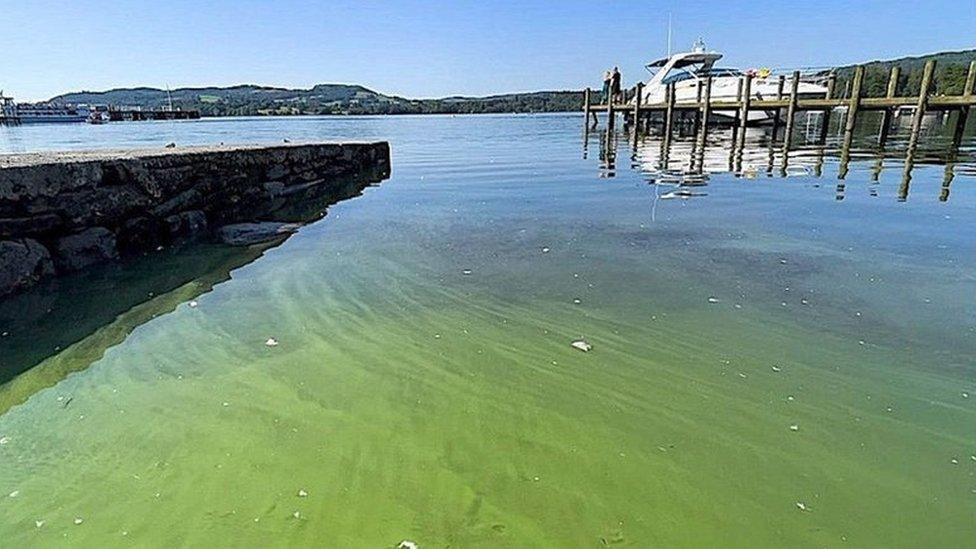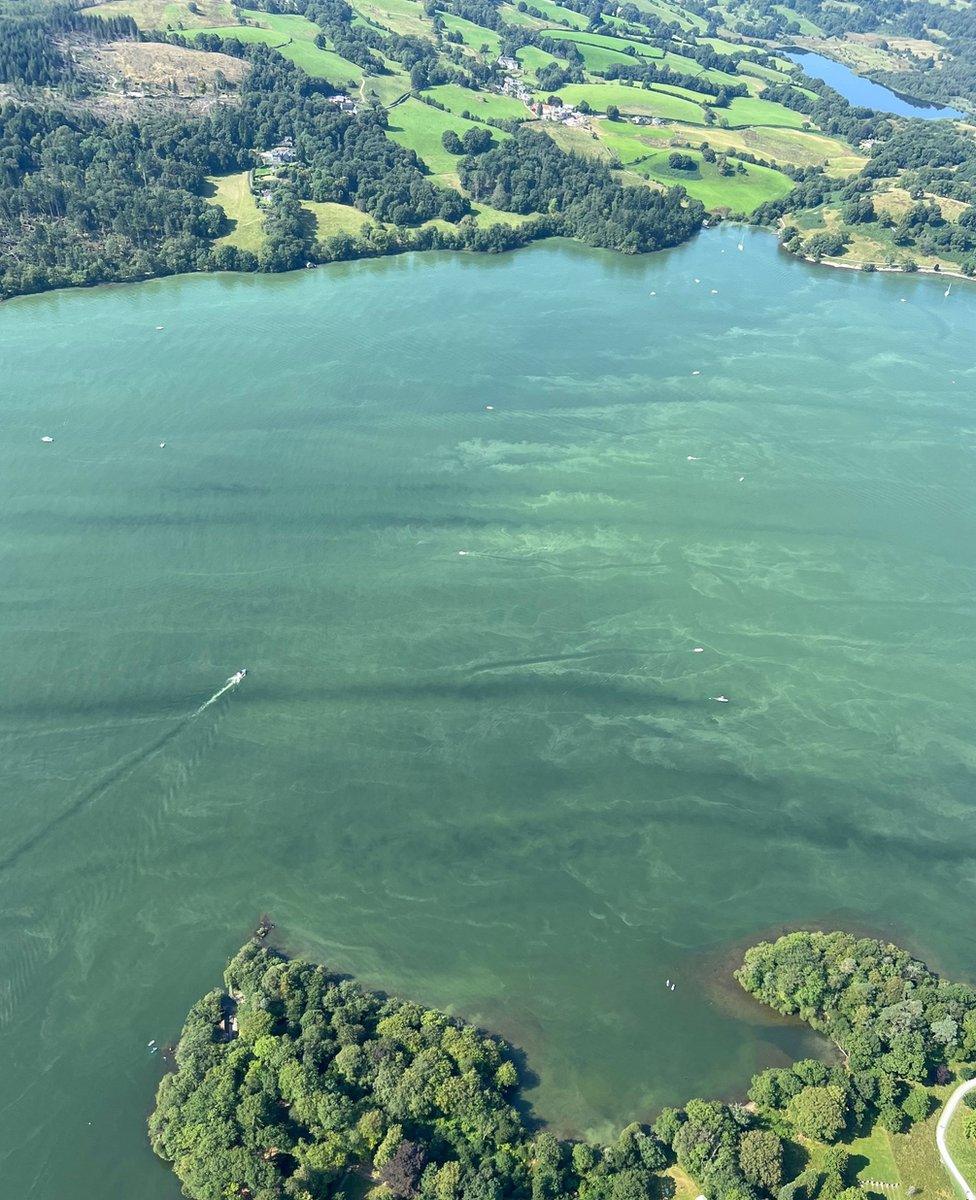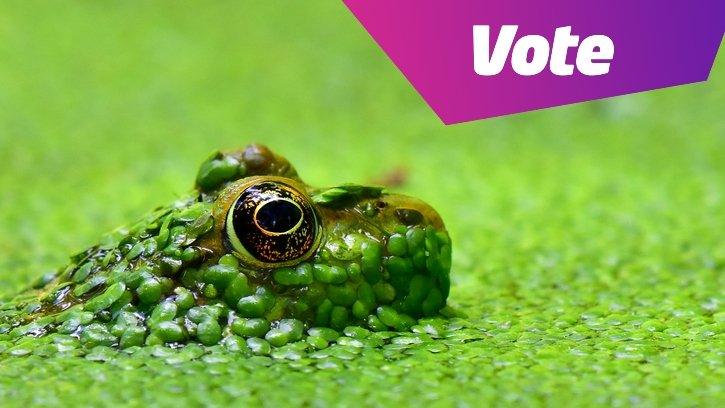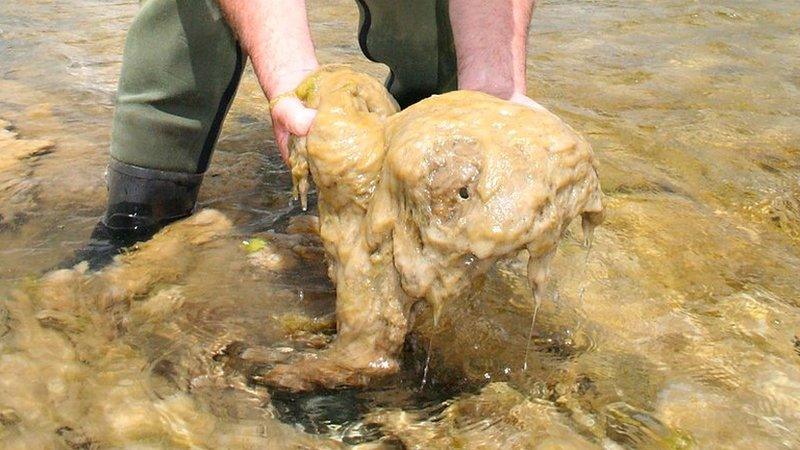Windermere: Harmful blue-green algae spotted in famous lake
- Published
- comments
Algae caused by sewage ruining Windermere
People have been told not to swim in Windermere because of blue-green algae in the lake.
Campaigner and conservationist Matt Staniek posted pictures and video online showing large blooms of the bright-coloured algae covering parts of the lake.
The Environment Agency (EA), responsible for protecting and improving the environment in England, have confirmed 11 reports of blue-green algae in Windermere since early June.
Blue-green algae can be harmful to humans and is very dangerous for dogs.
It's not just at Windermere, recently the algae was found off Hornsea beach in Yorkshire and in lochs and ponds in Aberdeenshire.
But what is blue-green algae and why can it be harmful?
What is blue-green algae?

Blue-green algae at the end of Windermere
Blue-green algae maybe be called algae but it's a type of bacteria called cyanobacteria. It appears naturally in our lakes, rivers, ponds and canals.
It's hard to see the individual bacteria, but when they group together they form green-blue clumps or blooms. Blooms usually form when the weather gets hot, particularly if there is sewage in the water.
The algae blooms happen naturally in some waters, but the way water is managed around the lakes can also affect it.
Pollutants containing a chemical called phosphate make the blooms worse.
Campaigners say this is coming from sewage from waste treatment sites owned by United Utilities, septic tanks at homes and holiday lets, and run-off from farming land near Windemere.
Why is it bad?
Blue-green algae can be toxic to people, causing rashes if it comes into contact with skin or illness if the water is swallowed.
The algae can be really dangerous to pets, wild animals and livestock.
The government advice is to stay away from the algae. "You can't tell if an algal bloom in the sea, a lake or river is toxic just by looking at it, so it's safest to assume it is," according to their website.
Adding, "keep pets and children away from water and avoid skin contact with the water or algae."
If anyone spots blue-green algae blooms they are advised to contact the Environmental Agency.
What needs to be done?

This picture shows Windermere with the blue-green algae covering it
Campaigners say the only way to stop the algae is by stopping sewage entering the lake.
Matt Staniek started an online petition to stop sewage being released into Windermere. He said the sewage comes from sources like waste treatment sites, septic tanks from homes and holiday lets, and water waste from farming land.
He argued more needs to be done by companies to tackle the problem. "We have not seen sufficient investment to protect Windermere. The entirety of the lake is covered in blue-green algae," he added.
Local MP Tim Farron, Liberal Democrat MP for Westmorland and Lonsdale, agreed saying: "The water company is not doing enough to clean up their act and the government has not only failed to regulate them but also the thousands of septic tanks that are adjacent to the lake and its tributaries.
"Their failure to take this seriously is a threat to health, the environment and the tourism industry."
The EA said it had spent more than £700,000 over the past decade to help the problem. They add that it's important for people to report environmental incidents to them to they can look into it.
- Published15 January 2021

- Published1 July 2022

- Published19 July 2011
